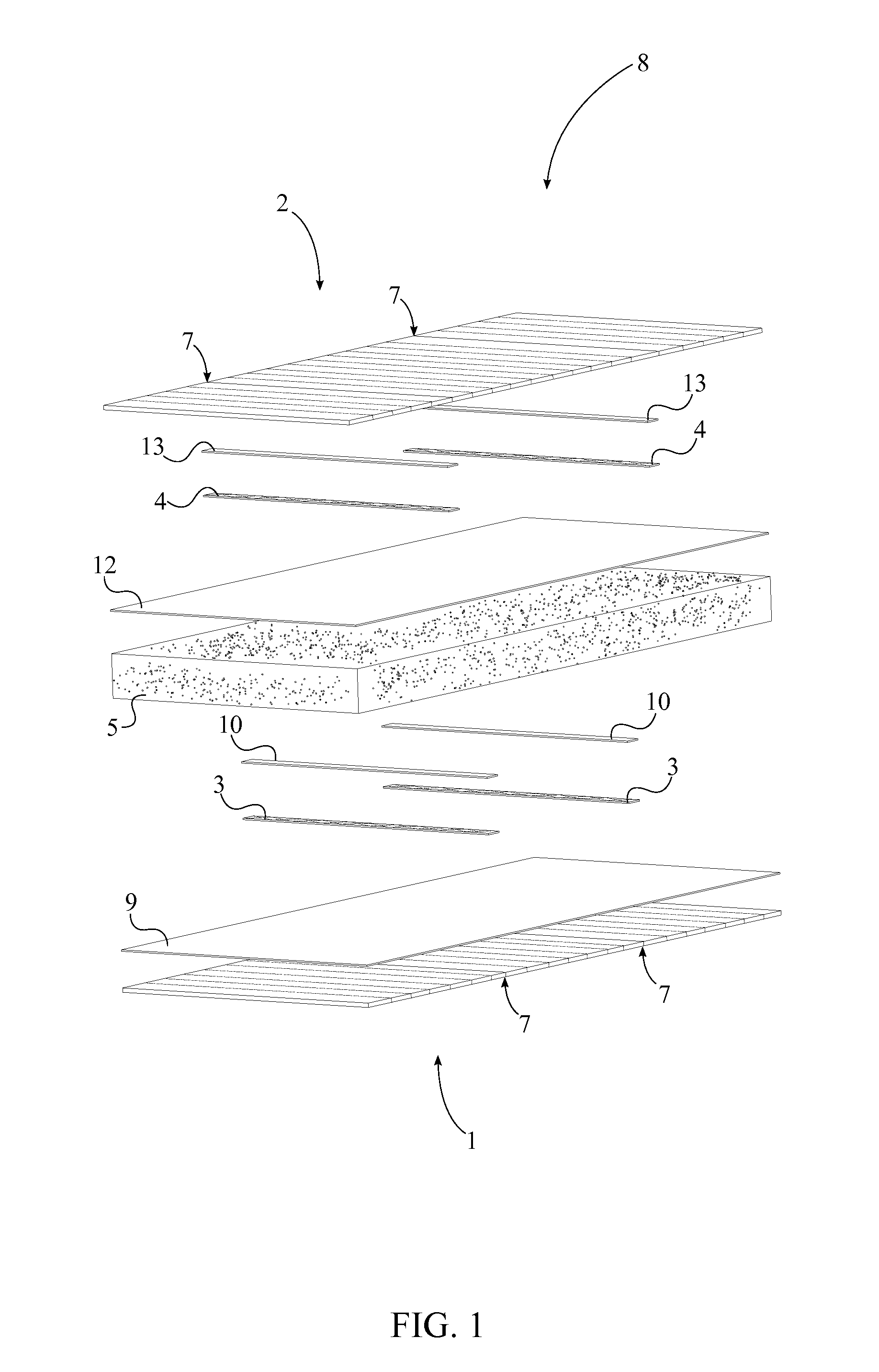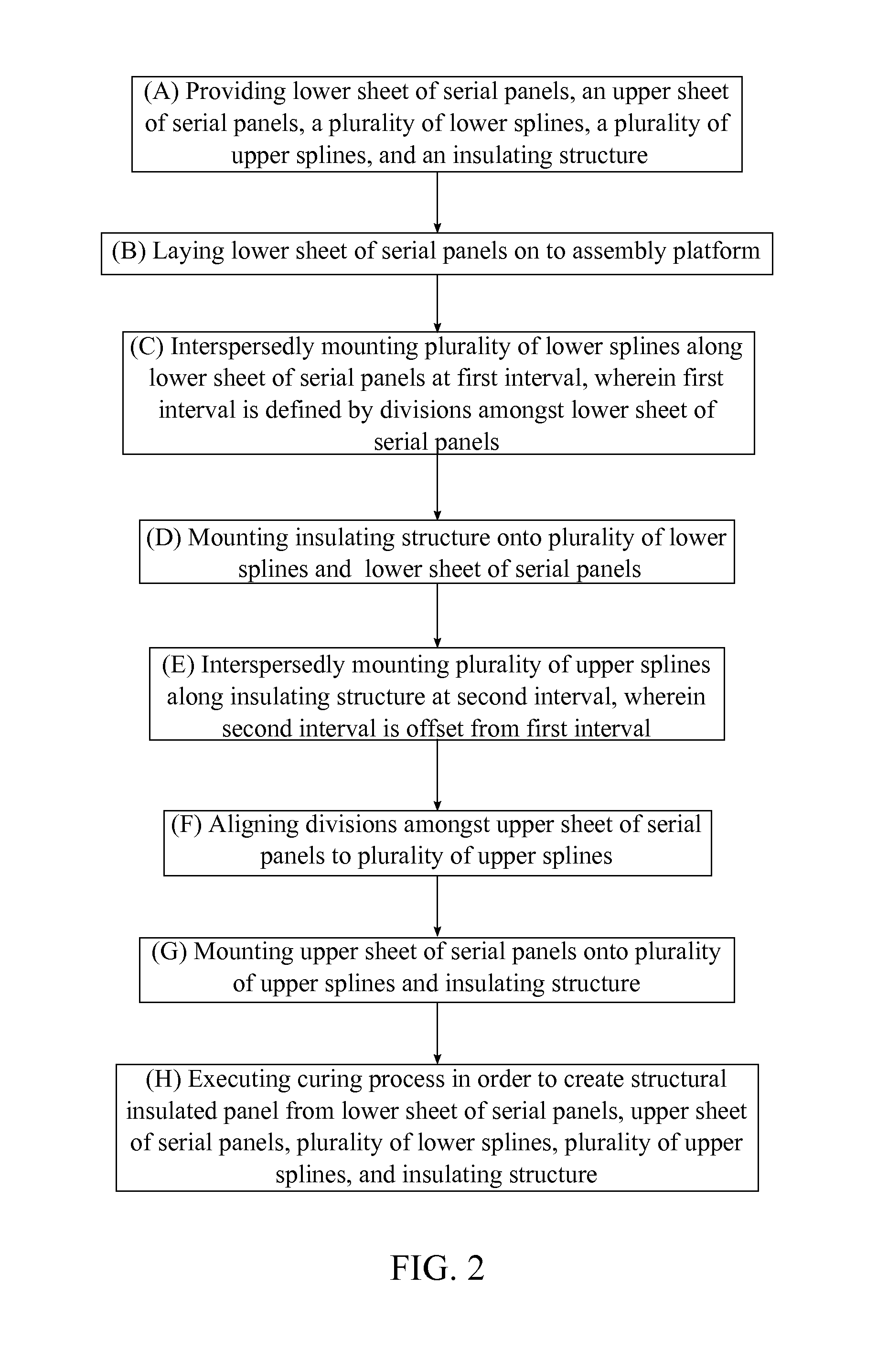Method for Splicing Stress Skins used for Manufacturing Structural Insulated Panels
a technology of structural insulation and stress skins, which is applied in the direction of layered products, chemistry apparatus and processes, and other domestic articles, etc., can solve the problems of reducing the thermal efficiency of the sip, the length of the sips is limited by the available length of the skin material, and the method is less than desirabl
- Summary
- Abstract
- Description
- Claims
- Application Information
AI Technical Summary
Benefits of technology
Problems solved by technology
Method used
Image
Examples
Embodiment Construction
[0015]All illustrations of the drawings are for the purpose of describing selected versions of the present invention and are not intended to limit the scope of the present invention.
[0016]The present invention is the manufacturing method for structural insulated panels 8 with splicing stress skins through lamination. More specifically, the present invention is the manufacturing process which produces substantially longer structural insulated panels 8 compared to traditional means without sacrificing thermal efficiency and structural integrity. Traditional structural insulated panels 8 comprise a rigid insulating core sandwiched in between two layers of structural panels. Structural insulated panels 8 are ideal building material for constructing apartments, houses, and other similar structures. Due to the structural insulated panel's 8 high thermal efficiency less energy and effort is required to maintain adequate internal temperatures for houses and storage spaces which in turn decr...
PUM
| Property | Measurement | Unit |
|---|---|---|
| Length | aaaaa | aaaaa |
| Pressure | aaaaa | aaaaa |
| Width | aaaaa | aaaaa |
Abstract
Description
Claims
Application Information
 Login to View More
Login to View More - R&D
- Intellectual Property
- Life Sciences
- Materials
- Tech Scout
- Unparalleled Data Quality
- Higher Quality Content
- 60% Fewer Hallucinations
Browse by: Latest US Patents, China's latest patents, Technical Efficacy Thesaurus, Application Domain, Technology Topic, Popular Technical Reports.
© 2025 PatSnap. All rights reserved.Legal|Privacy policy|Modern Slavery Act Transparency Statement|Sitemap|About US| Contact US: help@patsnap.com



